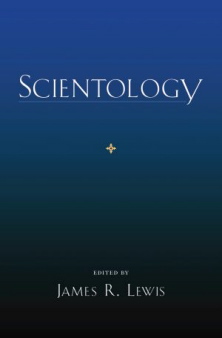
In late June, a special 35-page series in the St. Petersburg Times newspaper of Florida reported on allegations of church abuse from top Scientology executives who left the church in the last few years. The ex-members, who include former spokesperson Marty Rathburn, the former head of Scientology headquarters, Tom DeVocht, and Amy Scobie, who helped create the church’s celebrity network, allege that physical violence permeates the organization’s management. Scientology head David Miscavage is said to have beaten many church staffers over minor infractions and for challenging his leadership. In the last few years attacks on the Scientology have grown more frequent and bolder by ex-members and other critics. The recent allegations were denied by church officials, who claim that the defectors are trying to stage a coup and seize control of the church.
The defectors also claim that Miscavage’s leadership has hampered church growth. Their access to internal data reports suggest to such critics a gradual decline of key statistics, including the “value of church services delivered” and the number of auditing hours and courses completed. Rathburn said that to pump up revenue, the church has repackaged its old books as new writings to sell back to members at high prices-a charge the church denies.
A new book on the movement, entitled Scientology (Oxford University Press), focuses less on the church’s abuses than on its organizational dynamics and teachings, although its authors do broach controversial issues. Editor James Lewis asserts that Scientology is experiencing healthy growth, with controversy even aiding its expansion as it brings it more publicity. The church grew by 22 percent between 1990 and 2001. Lewis adds that while the church draws its members from the milieu of the New Age movement, it offers a range of services and a level of community that has few rivals within such circles.
Sociologist William Sims Bainbridge suggests that the church grows in hi-tech (as well as unchurched) regions, such as the West Coast of the US. He mapped the percentage of websites run by individual Scientologists and found that the highest rate was in California and the Pacific Northwest. Bainbridge concludes that the science fiction background of Scientology’s founder L. Ron Hubbard, as well as the church’s affinity with the “emerging cyberculture,” may make it particularly adaptable to the technological future.
Other contributors see fewer bright prospects for the church. A chapter on Scientology in Denmark finds a decrease in new people joining, with a core group of Scientologists remaining relatively constant for the last 20 years. Peter B. Andersen and Rie Wallendorf of the University of Copenhagen add that because of the Danish church’s suspicion of outsiders, members are unlikely to have the social ties necessary to bring in new members.
There is also some dispute about the meaning and levels of involvement in Scientology. An examination of the ceremonies of the church by Regis Dericquebourg of Charles De Gaulle University also finds a low rate of participation compared to the popular practice of auditing, which is a religious form of therapy and evaluation where members attempt to become clear of past troubles and traumas. Dericquebourg finds that Scientology ceremonies have social functions that carry more appeal for elite members.
Bernardette Rigal-Cellard of the University Michel de Montaigne studied the overseas missions of the church and found that the standardized, American-centered approach of Scientology allows for few adaptations to local cultures in its practices and organizational strategy. This approach may work in cultures friendly to the U.S. but it can hurt the church in places where its American image has less appeal, such as in in parts of western Europe.
Richard Cimino
Richard Cimino is the founder and editor of Religion Watch, a newsletter monitoring trends in contemporary religion. Since January 2008, Religion Watch is published by Religioscope Institute. Website: www.religionwatch.com.